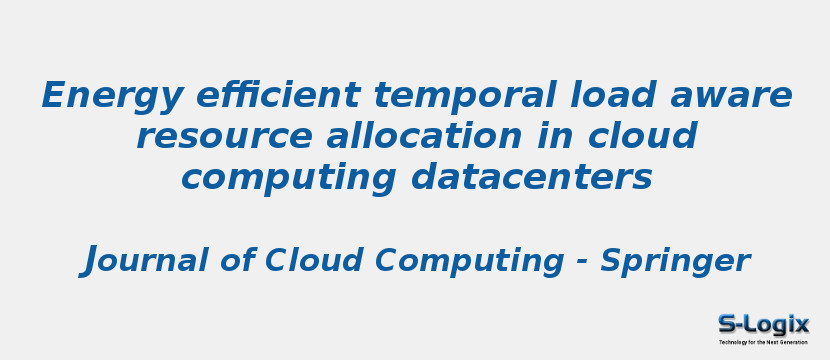Research Area: Cloud Computing
Cloud computing datacenters consume huge amounts of energy, which has high cost and large environmental impact. There has been significant amount of research on dynamic power management, which shuts down unutilized equipment in a datacenter to reduce energy consumption. The main consumers of power in a datacenter are servers, communications network and the cooling system. Optimization of power in a datacenter is a difficult problem because of server resource constraints, network topology and bandwidth constraints, cost of VM migration, the heterogeneity of workloads and the servers. The arrival of new jobs and departure of completed jobs also create workload heterogeneity in time. As a result, most of the previous research has concentrated on partial optimization of power consumption, which optimizes either server and/or network power consumption through placement of VMs. Temporal load aware optimization, minimization of power consumption as a function of time has vastly been studied. When optimization also included migration, then solution had been divided into two steps, in the first step optimization of server and/or network power consumption is performed and in the second step migration of VMs has been taken care of, which is not an optimal solution. In this work, we develop joint optimization of power consumption of servers, network communications and cost of migration with workload and server heterogeneity subject to resource and bandwidth constraints through VM placement. Optimization results in an integer quadratic program (IQP) with linear/quadratic constraints in number of VMs assigned to a job on a server. IQP can only be solved for very small size systems, however, we have been able to decompose IQP to master and pricing sub-problems which may be solved through column generation technique for systems with larger sizes. Then, we have extended the optimization to manage temporal heterogeneity of the workload. It is assumed that time-axis is slotted and at the end of each slot jobs makes probabilistic complete/partial release of the VMs that they are holding and there will also be new job arrivals according to a Poisson process. The system will perform re-optimization of power consumption at the end of each slot that also includes the cost of VM migration. In the re-optimization, VMs of unfinished jobs may experience migration while new jobs are assigned VMs. We have obtained numerical results for optimal power consumption for the system as well as its power consumption due to two heuristic VM assignment algorithms. The results show optimization achieves significant power savings compared to the heuristic algorithms. We believe that our work advances state-of-the art in dynamic power management of datacenters and the results will be helpful to cloud service providers in achieving energy saving.
Keywords:
Author(s) Name: Shahin Vakilinia
Journal name: Journal of Cloud Computing
Conferrence name:
Publisher name: Springer
DOI: 10.1186/s13677-017-0103-2
Volume Information: volume 7, Article number: 2 (2018)
